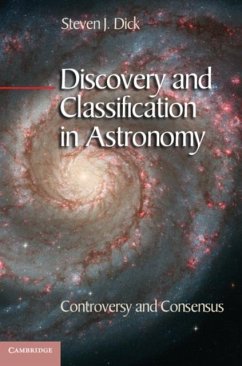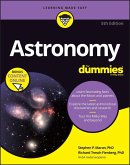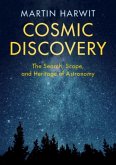Astronomical discovery involves more than detecting something previously unseen. The reclassification of Pluto as a dwarf planet in 2006, and the controversy it generated, shows that discovery is a complex and ongoing process - one comprising various stages of research, interpretation and understanding. Ranging from Galileo's observation of Jupiter's satellites, Saturn's rings and star clusters, to Herschel's nebulae and the modern discovery of quasars and pulsars, Steven J. Dick's comprehensive history identifies the concept of 'extended discovery' as the engine of progress in astronomy. The text traces more than 400 years of telescopic observation, exploring how the signal discoveries of new astronomical objects relate to and inform one another, and why controversies such as Pluto's reclassification are commonplace in the field. The volume is complete with a detailed classification system for known classes of astronomical objects, offering students, researchers and amateur observers a valuable reference and guide.
Dieser Download kann aus rechtlichen Gründen nur mit Rechnungsadresse in A, B, BG, CY, CZ, D, DK, EW, E, FIN, F, GR, HR, H, IRL, I, LT, L, LR, M, NL, PL, P, R, S, SLO, SK ausgeliefert werden.
'A highly accessible collection of narrative case studies that explore how the discipline of astronomy has gone about detecting new classes of phenomena and then has decided if, indeed, these new classes are in fact new, or whether they are actually variations or extremes of previously known classes. The bold ambition of the book, to craft a systematic hierarchical classification of all astronomical phenomena, to aid in forming and reforming taxonomies for future discoveries of new astronomical phenomena is, indeed, a goal that should be of great interest to scientists, historians, sociologists and philosophers.' David H. DeVorkin, National Air and Space Museum









